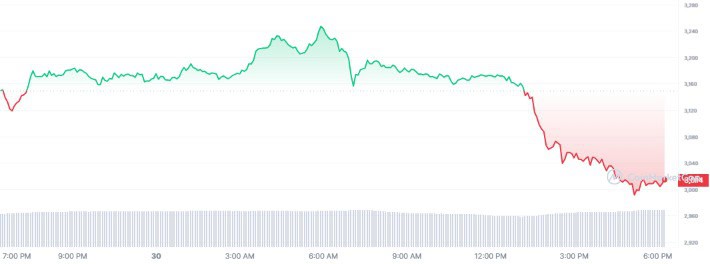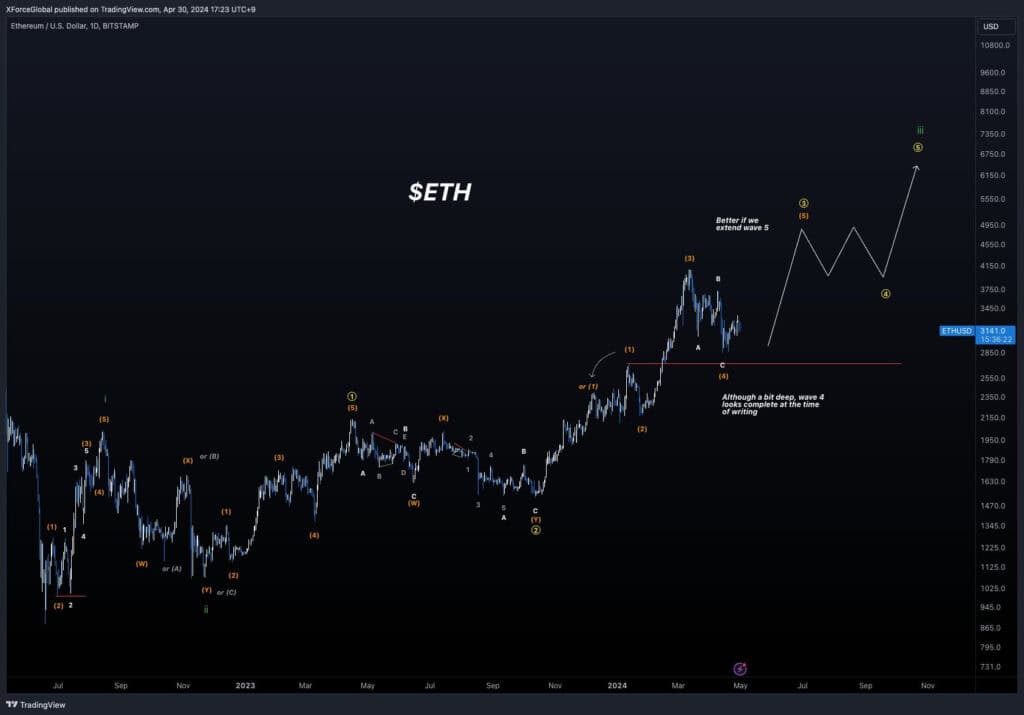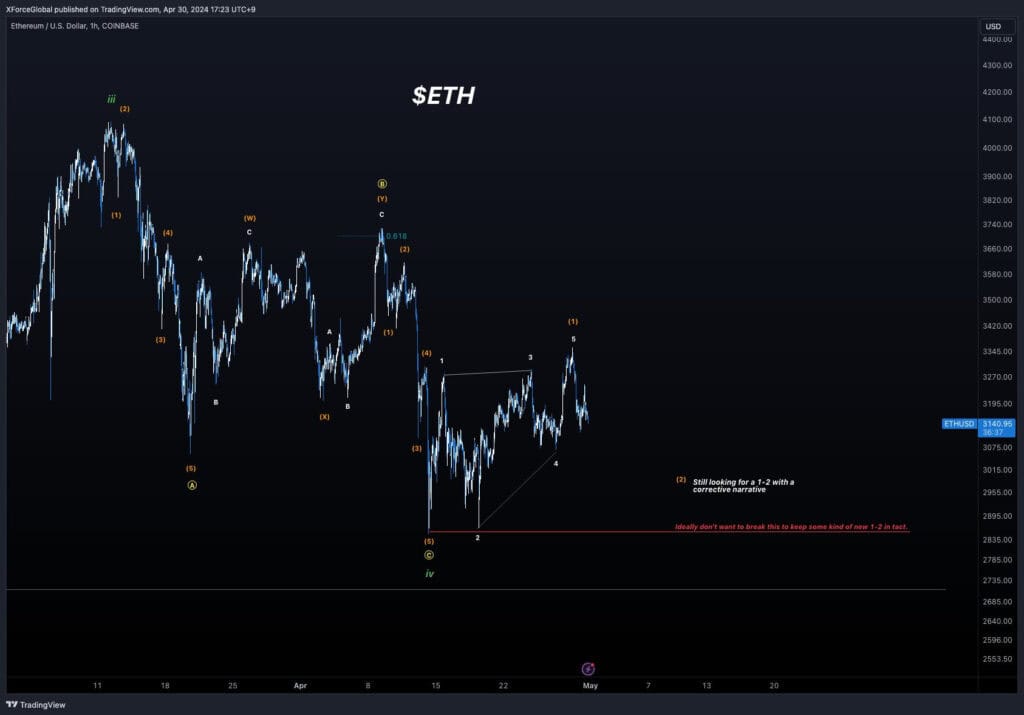Ethereum (ETH) is currently witnessing a notable decrease in its value, paralleling the trend seen in Bitcoin (BTC). ETH is encountering difficulties in maintaining its support level, facing substantial downward pressure that is driving its price toward breaching this critical level.
At the time of writing, the price of Ethereum stands at $3,014.76, with a 24-hour trading volume amounting to $17.87 billion and a market capitalization of $367.97 billion. Over the past 24 hours, the price of ETH has decreased by 4.88%.

Crypto analyst Crypto Tony recently provided an update on the Ethereum (ETH) to US Dollar (USD) pair, indicating a potentially concerning scenario. He suggested that the worst-case scenario could entail a gradual decline towards the $2,700 level. Additionally, he emphasized the importance of devising a strategic plan in preparation for the possibility of breaching previous lows.

Ethereum’s Wave Patterns and Price Potential
According to XForceGlobal’s primary macro analysis on Ethereum ($ETH), the current narrative suggests a continuation of bullish sentiment. However, there’s a crucial need to maintain validation for both shorter and primary timeframes, similar to Bitcoin’s situation. Any deviation from this trajectory could introduce bearish alternatives and cast doubt on the sustainability of the bullish momentum.
The analysis emphasizes the importance of Ethereum not breaking the internal 4th wave of the intermediate degree (in orange) marked by the red line. Such a breach would signal the emergence of new bearish scenarios, potentially disrupting the ongoing bullish trend.

As long as Ethereum remains above the designated invalidation level (marked in red) for wave 4, the analysis suggests the potential for further upward movement, particularly towards the final intermediate 5th of the 3rd primary degree, before encountering consolidation to conclude the primary 5th.
Zooming in on the right chart, Ethereum’s price action appears to offer a clearer count than Bitcoin’s at the time of analysis. A discernible ABC pattern to the downside is observed, followed by the possibility of a developing 1-2 structure.

The wave 1 is seen as an ended leading diagonal contraction variation. As said before from a wider view, if this 1-2 formation does not cross through the red line then other counts will need to be considered which may change the whole analysis.
Related Reading | Slowdown in Bitcoin ETF Inflows Is Short-term Pause: Bernstein Report

